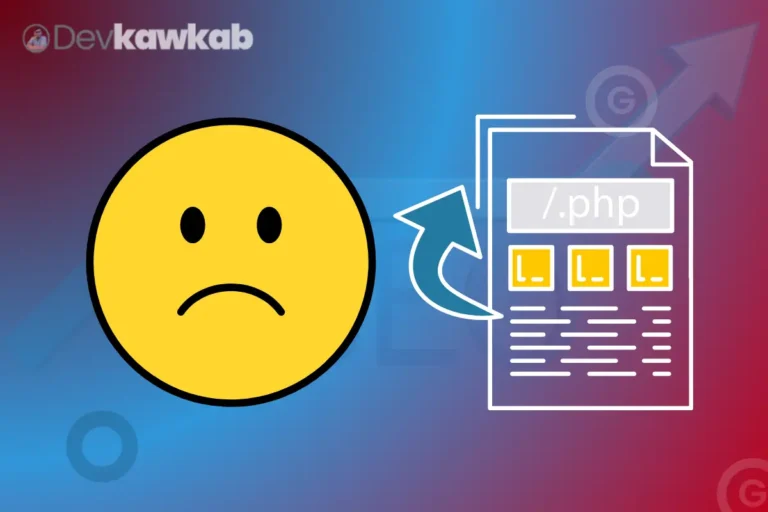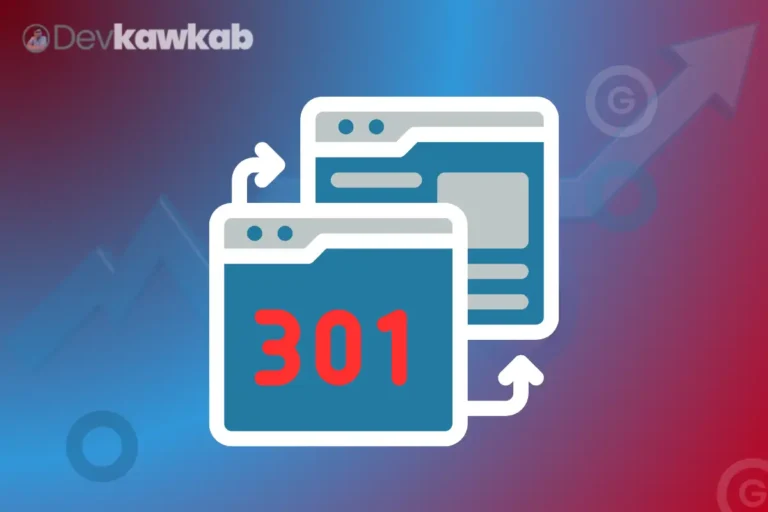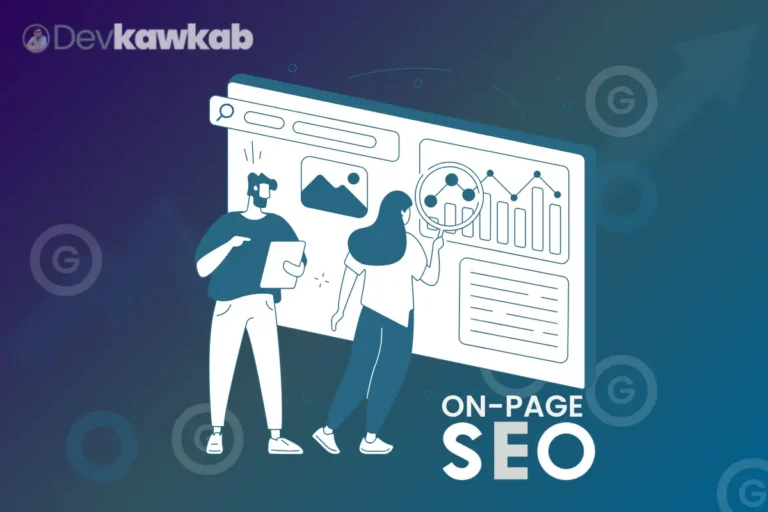If you’ve ever wondered why some websites dominate search results, on-page SEO is the answer. It’s the foundation of any successful SEO strategy, influencing everything from visibility to user experience.
Whether it’s optimizing keywords, improving site speed, or structuring content, on-page SEO has a profound effect on how search engines rank your site.
But how exactly does it work? On-page SEO ensures that every element of your site is optimized to appeal to both users and search engines. From keyword placement to mobile optimization, every piece plays a role in boosting your site’s rankings.
This guide you’ll learn how to:
- Structure content with header tags
- Improve page speed for better rankings
- Integrate internal links for SEO gains
- Leverage schema markup to stand out in search results
Let’s dive in and see how these tactics form the foundation of your SEO success!
Read More – Why Improve On-Page SEO Regularly?
What Makes On-Page SEO the Foundation of a Website’s Visibility?
On-page SEO is the basic of any website’s search engine visibility.
It involves optimizing elements that are visible on your site, like content, images, and links, to ensure search engines rank your site higher.
Without a solid on-page SEO strategy, your website may fail to attract organic traffic, making it harder for users to find your content. That’s why on-page SEO serves as the foundation of your site’s visibility.
Every page is an opportunity to improve rankings by focusing on elements like meta tags, keywords, and internal linking.
How Does On-Page SEO Directly Influence Search Engine Rankings?
On-page SEO directly impacts how well your website ranks on Google and other search engines. The better you optimize your on-page elements, the higher your website is likely to appear in search results.
Each on-page SEO factor, such as keyword density, meta descriptions, and header tags, affects your site’s rankings. Search engines rely on these elements to assess your page’s relevance to a search query.
For instance, well-placed keywords signal to search engines that your content is a good match for specific user queries.
The Role of Keywords and Content Optimization: By incorporating the right keywords naturally, you’re helping search engines recognize what your page is about. Content that is high-quality and keyword-optimized is more likely to rank well, making on-page SEO vital for boosting rankings.
Read More – Why On-Page SEO Affects User Experience?
How Do User Experience and On-Page SEO Work Together as a Foundation?
User experience (UX) and on-page SEO are closely connected.
A website with great on-page SEO elements like fast loading times, mobile optimization, and easy navigation also improves the user experience.
When your site is optimized for users, search engines reward you by ranking your website higher. Google prioritizes UX by looking at metrics like bounce rates and time on site.
A well-optimized page not only attracts visitors but keeps them engaged longer.
Improving UX Through Page Speed and Mobile Optimization: Page speed is a key factor in UX and SEO. A fast website provides a better experience, reducing bounce rates and increasing dwell time. Similarly, mobile optimization ensures that users on smartphones and tablets can easily navigate your site.
Why Is Keyword Placement Key in On-Page SEO?
Keyword placement is crucial for on-page SEO because it helps search engines understand your content. If your keywords are well-placed, Google can easily determine the relevance of your page to specific queries.
Placing keywords in strategic locations like the title tag, meta description, and headers boosts your chances of ranking higher.
But overdoing it can have the opposite effect. Keyword stuffing leads to penalties, so it’s important to maintain a natural flow.
Best Practices for Effective Keyword Placement: Incorporating keywords in the first 100 words of your content and using them in subheadings can help search engines better understand your content while avoiding penalties.
How Does On-Page SEO Help with Indexing and Crawling?
On-page SEO plays a critical role in ensuring that search engines can index and crawl your website efficiently.
Crawling is how search engines discover your content, and indexing is the process of adding your pages to their database.
By optimizing elements like internal links, sitemap, and robots.txt files, you make it easier for search engines to crawl and index your site, which is essential for boosting your visibility.
Creating a Clear Structure for Better Crawling: A well-structured website with a logical URL hierarchy and internal links makes it easy for search engines to crawl every page. Use Link Whisper or LinkBoss for quick internal linking.
How Do Title Tags and Meta Descriptions Impact On-Page SEO?
Title tags and meta descriptions are the first things a user sees when your page appears in search results.
These elements provide a summary of your page’s content to both users and search engines.
By crafting clear, keyword-optimized title tags and engaging meta descriptions, you increase your chances of getting more clicks, which can improve your rankings.
Optimizing for Click-Through Rate (CTR): A well-written meta description can improve your click-through rate (CTR) by making your content more appealing in the search results. CTR is an important ranking factor, which makes meta descriptions a vital part of on-page SEO.
Why Is E-A-T (Expertise, Authoritativeness, Trustworthiness) Critical for On-Page SEO?
Google’s E-A-T guidelines focus on expertise, authoritativeness, and trustworthiness.
These three factors are essential for improving your site’s credibility, especially in YMYL (Your Money or Your Life) content.
By ensuring that your content demonstrates expertise and trustworthiness, you build a strong foundation for on-page SEO, which in turn improves your rankings.
Building Trust Through High-Quality Content: Creating authoritative content that is backed by credible sources helps in building trust with both users and search engines.
How Does Internal Linking Support On-Page SEO Efforts?
Internal linking is an important part of on-page SEO because it helps search engines understand the structure of your website. By linking related pages, you create a clear path for both users and search engines to follow.
Internal links help distribute page authority and improve rankings for other pages on your site.
Best Practices for Internal Linking: Ensure that your anchor texts are relevant and that each link provides additional value for users and search engines.
What Is the Importance of Optimizing for Mobile Devices?
Mobile optimization is critical for on-page SEO because more users are accessing the web through their smartphones and tablets than ever before.
Google also follows a mobile-first indexing approach, meaning it prioritizes the mobile version of your website when determining rankings.
If your site isn’t optimized for mobile devices, you risk losing a significant amount of traffic.
Ensuring that your site is responsive, loads quickly, and provides a good user experience on mobile is now non-negotiable.
How Mobile Optimization Affects Rankings and UX: A poorly optimized mobile site leads to higher bounce rates, which can negatively impact your rankings. Optimizing for mobile improves both SEO and user experience by ensuring that visitors stay longer and engage more with your content.
Why Are Page Speed and Technical SEO Essential for On-Page SEO?
Page speed is a key ranking factor in Google’s algorithm.
A website that loads slowly can frustrate users and lead to high bounce rates, negatively affecting both user experience and SEO. This is why optimizing your website’s speed is essential for on-page SEO.
Technical SEO, which involves elements like site structure, XML sitemaps, and robots.txt files, works hand in hand with page speed to ensure that your site performs optimally.
Without proper technical SEO, search engines may struggle to crawl and index your content, which can limit your site’s visibility.
How to Improve Page Speed and Technical SEO? Optimizing your images, leveraging browser caching, and using a content delivery network (CDN) can significantly improve page speed. Technical elements like ensuring a clean URL structure and fixing broken links also boost your site’s SEO performance.
How Does Schema Markup Enhance On-Page SEO?
Schema markup is a form of structured data that helps search engines better understand your content.
By adding schema markup to your website, you can boost your search results with rich snippets such as reviews, ratings, and event information, which makes your listing stand out.
Schema markup can boost your click-through rate (CTR), which is a key factor for ranking.
It doesn’t directly impact rankings, but by increasing visibility and CTR, it indirectly improves your site’s SEO performance.
Different Types of Schema and Their Impact: There are several types of schema markup, such as product, review, FAQ, and breadcrumb schema. Implementing the right type of schema for your website can give your page an edge in search results, especially for competitive keywords.
Why Is Content Quality a Foundational Aspect of On-Page SEO?
High-quality content is the backbone of on-page SEO.
It’s not just about stuffing your content with keywords—it’s about providing value to your audience.
Google’s algorithm prioritizes content that is helpful, informative, and relevant to the search query.
If your content doesn’t meet the needs of users, it won’t rank well, no matter how well you optimize other on-page SEO elements.
Creating engaging, well-researched, and original content is essential for building a strong on-page SEO foundation.
Key Components of High-Quality Content: High-quality content is informative, easy to read, and optimized for both search engines and users. This includes using visual elements like images and videos to make the content more engaging and breaking down the text into digestible sections.
How Do Header Tags Structure Content for Better On-Page SEO?
Header tags (H1, H2, H3, etc.) are crucial for structuring content on a webpage.
They provide a hierarchical structure that makes your content easier to read for both users and search engines.
Using header tags properly improves the readability of your content, which in turn enhances user experience.
Additionally, header tags provide search engines with contextual clues about your page, helping them understand the most important parts of your content.
Best Practices for Using Header Tags: Your H1 tag should contain the primary keyword and summarize the main topic of the page. Use H2 and H3 tags to break down subtopics and include relevant keywords naturally.
How Does Duplicate Content Harm On-Page SEO?
Duplicate content is detrimental to on-page SEO because it confuses search engines, making it difficult for them to decide which version of a page to rank.
Google’s algorithm penalizes websites with excessive duplicate content by lowering their rankings or ignoring duplicate pages altogether.
This can hurt your site’s overall SEO performance, leading to a drop in traffic and visibility. It’s crucial to implement the right techniques, such as using canonical tags, to avoid duplicate content issues.
Preventing Duplicate Content with Canonical Tags: A canonical tag tells search engines which version of a page is the original, preventing issues with duplicate content. Implementing this tag ensures that Google only indexes the preferred version, helping to maintain your SEO efforts.
Conclusion
On-page SEO is crucial for enhancing your website’s visibility and engaging users effectively. By focusing on elements like content quality, page speed, and mobile optimization, you create a strong foundation for better search engine rankings.
To remain competitive, continuous optimization of these on-page factors is essential. Regular audits allow you to adapt to changing algorithms and user preferences, ensuring your website stays relevant.
By integrating these strategies, you position your site for long-term success, making it a standout contender in the crowded digital landscape.






